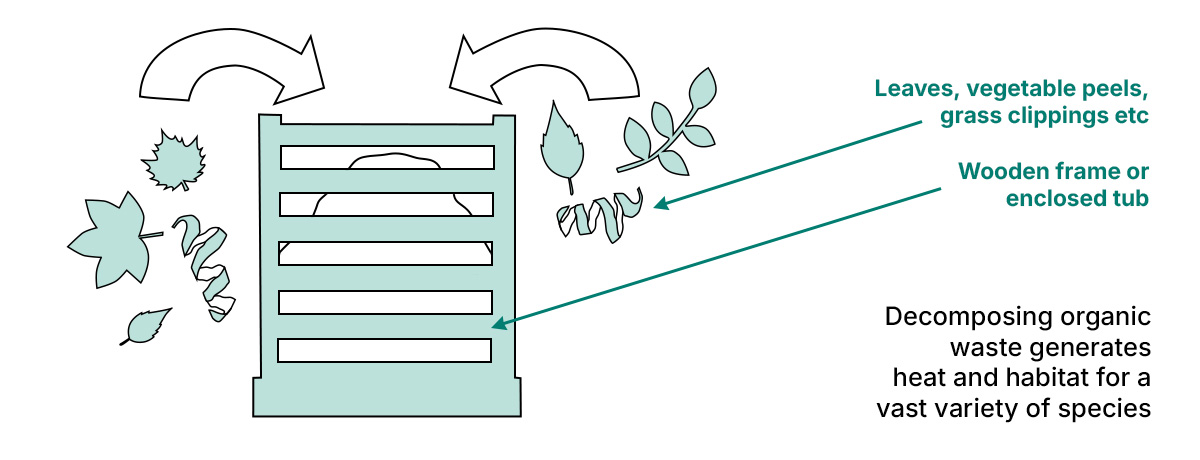What is it?
A compost heap looks like a pile of garden waste and sometimes kitchen scraps too, often with a covering on top. The compost heap may be partially enclosed by a wood frame with gaps at the sides and bottom to let wildlife and air in and out, or it may be in an enclosed tub (less good for wildlife, but still valuable). You’ll often see layers of grass clippings, leaves, vegetable peels, and maybe even some newspaper. It’s usually located in a shady corner where it’s somewhat hidden and avoids the hottest of sunny summer days.
What does it do?
A compost heap is a natural recycling system where organic waste decomposes into nutrient-rich soil. It’s like nature’s way of turning your old banana peels and grass clippings into black gold for a new generation of plants. But that’s not the half of it. The decomposing waste generates heat which makes compost heaps warm refuges from potentially lethal freezing winter weather. The warmth also makes for a heated nursery for a range of wildlife. The higgledy-piggledyness of garden waste creates lots of space for small animals to crawl about and curl up in and the whole thing is a living larder for a vast variety of species.
Who benefits?
Compost heaps are vital feeding, breeding and over-wintering grounds for animals including slow worms, hedgehogs, frogs and even butterflies and moths. They’re also food, home and nursery to the vital smaller invertebrates that some of the larger animals feed on. Thought of that way, compost heaps really are fantastically rich and complex habitats, even if you’re above ground level.
Find out more
- For more information, visit The London Wildlife Trust’s page which includes tips and infographics on how to make and maintain compost heaps.
- The Wildlife Gardening Forum has a detailed guide on how to make your own compost, including how to build different types of compost heap


